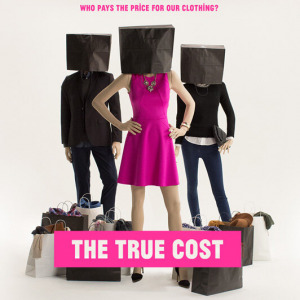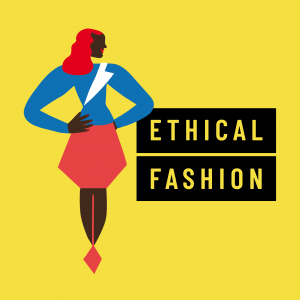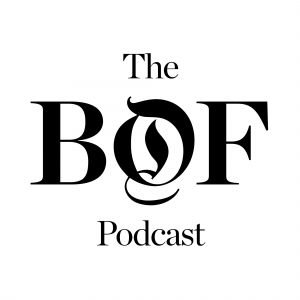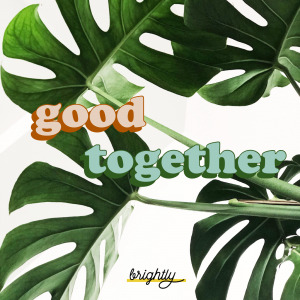We love fashion. Fashion is art, it’s fun, it’s a creative outlet, and it’s a passion.
For some, fashion is a way of life, an art form and identity, a precious way to self-express and make a statement without saying a word. For many, it is simply a basic need, a piece of fabric on their backs and a physical barrier — a form of protection. No matter the case, the mass production of apparel has become an essential business and is a MAJOR part of what fashion is today. It has given people opportunities, an income and a living, but it has also played a hand in destroying the earth we live on, leaving a lasting, negative impact ethically and environmentally. This has forced many people within the fashion industry and those affected by it to question the harmful consequences of globalization and overconsumption, and it’s important as consumers to know the role we play in this.
Today we’re covering the fundamentals of the ethical and environmental impacts of the fashion industry. We start with this question: What is at the expense of the beautiful clothes we wear?
Quick Facts About the Fashion Industry:
These quick facts may give you a little insight into the cost of your clothes.
View this post on Instagram
-
The fashion industry produces 10% of all humanity’s carbon emissions, is the second-largest consumer of the world’s water supply and pollutes the oceans with microplastics.
-
The fashion industry’s carbon emissions are more than all international flights and maritime shipping combined.
-
It takes about 2,000 gallons of water to produce a pair of jeans. That’s more than enough for one person to drink eight cups per day for 10 years.
-
Textile dyeing is the world’s second-largest polluter of water, since the water leftover from the dyeing process is often dumped into ditches, streams, or rivers, making it responsible for 20% of all industrial water pollution worldwide.
-
25% of the products released on the market every year remain unworn, which may end up being sent to a landfill — 10.5 million tons of clothes are sent to a landfill each year. Clothing that’s sent to thrift stores or charity shops is often sent to Africa or Central America where it disrupts the local textile and tailoring economies in these areas.
-
In Bangladesh, garment workers (who are mostly female) only make $96 per month, though the government wage board suggests a wage 3.5 times that amount in order to live a life with basic facilities.
-
A 2018 U.S. Department of Labor report found evidence of forced and child labor in the fashion industry in Argentina, Bangladesh, Brazil, China, India, Indonesia, Philippines, Turkey, Vietnam and other countries.
-
One report found that addressing environmental and social problems created by the fashion industry would provide a $192 billion overall benefit to the global economy by 2030. The annual value of clothing discarded prematurely is more than $400 billion.
-
“The average consumer bought 60 percent more clothes in 2014 than in 2000, but kept each garment for half as long.”
The intersectionality of the issues within the fashion industry creates a sense of urgency to address the facts and take into heavy consideration consumer habits and brand accountability. The culprits of the environmental and ethical impacts of the fashion industry exist on multiple levels — from the lack of government regulation in developing countries, to the exploitative leaders of Corporate America, and to the consumers who may not be aware of the harmful impacts.
How are we consuming and what do our purchasing decisions say about what we value?
Carry Somers, the Global Operations Director and founder of Fashion Revolution, tells us that increasing the longevity of our garments even just by nine months “will reduce the carbon, water and waste footprint by around 20% to 30% each.”
View this post on Instagram
We live in a materialistic world that places self-worth and value on tangible goods and brand names. We are taught from a young age that new is better — to make money and to spend money. But our dollars have a voice and the power to drive change where we want to see it and collectively, fashion can be a force for good. The effects of overconsumption can be described by this quote: “The future can’t be anything if we keep buying everything.”
If you’re looking to minimize your footprint, these are some initiatives you can take (and get into the habit of):
Repairing clothes
Renting
Purchasing only what is necessary
Purchasing second-hand
Re-purposing old pieces
Value quality over quantity
Holding brands accountable
Researching the sustainability initiatives of brands
View this post on Instagram
Brands to Support:
As more people have become aware of the ugly truth of the fashion industry, brands are being held accountable for their treatment of their garment workers, employees, and supply chain practices. Apps like Good On You provide a database of information to fact check brands based on their sustainability initiatives. It’s also a great resource to discover ethical brands to support. Another tip is to support from small businesses, family-owned, and BIPOC-owned.
Check out the ratings for Gucci and H&M.
Gucci is one of the most notable designer brands in the world and recently launched its first sustainable collection which features sustainably sourced textiles.
H&M, a well-known fast fashion brand, carries a conscious collection which you should read more about here.
Be aware of greenwashing! Greenwashing is “the process of conveying a false impression or providing misleading information about how a company’s products are more environmentally sound. Greenwashing is considered an unsubstantiated claim to deceive consumers into believing that a company’s products are environmentally friendly.” Companies who greenwash may exaggerate that their manufacturing processes are sustainable and eco-friendly, when the truth is that only a minuscule percentage of their production methods actually meet ethical standards.
Although many fast fashion brands have launched some form of eco-friendly, sustainable initiative, it’s often not enough to outweigh (or even balance) the real cost of mass producing their clothes. Most brands aren’t required to disclose their social and environmental policies and practices which opens opportunities for loopholes and exploitative behavior. (Find out which brands have disclosed their policies and practices at Fashion Revolution’s Transparency Index).
With the rise of fast fashion in the past few decades, the fashion calendar increased its number of seasons dramatically with a new cycle every month! Now, some designer brands have started to commit to a slower fashion calendar to reduce waste and over-consumption.
The Best Resources to Learn More About the Fashion Industry
As a Remake ambassador, I am extremely excited and proud to share about all the work behind this non-profit organization that goes into educating the public about the truth of the fashion industry and creating movements that push for a brighter future. One of the notable movements Remake started this year was the #PayUp movement that called for big brands to pay their garment workers for garments that had already been made before COVID hit the US. The denied wages left many of these workers misplaced amidst a pandemic while corporate owners continue to reap a profit from work that was never paid for!
To stay in the loop (and to get educated), check out these amazing resources below!
View this post on Instagram
Who to Follow:
@fash_rev // @remakeourworld // @unfashionalliance // @ethicalfashion // @fashionandthefree
What to Watch:
The Patriot Act on Netflix
This s a great starting point for understanding the impacts of the fashion industry! Hasan Minaj discusses the facts while delivering punches that will leave you feeling moved and more thoughtful about your shopping decisions.

The True Cost
Available on Prime Video — This highly rated documentary pulls back the curtain on the fashion industry and reveals what the true cost is behind our clothes.
What to Listen to:

Ethical Fashion Podcast by Ethical Fashion Initiative
Available on Spotify — “Hello to a better way focused on social and environmental justice, inclusivity and sustainable development. The UN’s Ethical Fashion Initiative acts as a bridge, connecting marginalised artisan communities, often in challenging and remote locations, with some of the biggest names in international fashion. Explore the issues driving the ethical fashion conversation with your hosts UN officer Simone Cipriani and sustainable fashion journalist Clare Press.“

The Business of Fashion Podcast
Available on Spotify — This podcast covers everything fashion business with a large focus on ethical and environmental impacts as of late. You’ll find valuable information on big brands, supply chain, and interesting interviews with industry professionals who give an in-depth look into the fashion industry.

Good Together: Ethical, Eco-Friendly, Sustainable Living
Available on Spotify — “Living ethically should be easier. Curious about a zero waste lifestyle? Want to know what the “circular economy” or “slow fashion” really means? Each episode, brought to you from Brightly.eco by ethical experts Laura Alexander Wittig and Liza Moiseeva, features daily, actionable tips to help you live your life more sustainably.”

Ethical fashion is an increasingly important issue as we become further aware of climate change and environmental protection needs. What are your favorite ethical brands? Share with us in the comments!
More On Ethical And Sustainable Living:
How To Support Brands That Align With Your Values + The Importance Of Accountability
The Best Consignment Stores To Score Luxury Pieces

